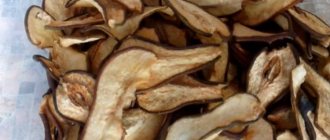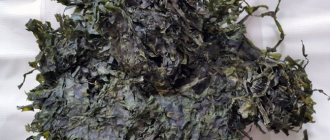Summer residents often have situations when they urgently have to harvest crops from the bushes. And it doesn’t matter whether the vegetables have time to ripen. Many people are upset about this because they think that green vegetables are no longer suitable for consumption. In the article, this myth will be completely dispelled; we will tell you how to properly store the harvest so that the tomatoes picked green turn red.
There are several ways to store unripe tomatoes - we will talk about each of them in detail.
Why is it necessary to remove unripe tomatoes?
Since premature harvesting of tomatoes is a necessary measure, it is necessary to understand why summer residents resort to it. There are several reasons for picking tomatoes early.
Reasons why tomatoes do not have time to ripen
The reason may be an incorrect selection of varieties. Quite often, summer residents, especially beginners, choose late-ripening varieties for growing in open ground. In this case, ripening occurs in the fall, when the cold weather begins. Until this time, the bush grows slowly, slowly forms ovaries and becomes overgrown with greenery. And only after all these stages the slow ripening of the fruit begins.
Such tomatoes begin to ripen only in the fall, when the air temperature no longer allows them to ripen on the bushes. If they are not harvested green, there is a risk of losing the harvest completely. Remember: late varieties are optimal for growing in greenhouses.
Attention ! To ensure that vegetables ripen before frosts in open ground, choose early and mid-ripening varieties.
Another reason is improper care of bushes. If you want to get the harvest in a timely manner, it is necessary to pinch and shape the plant during the intensive growth of the bush. Regular feeding is needed, but during the ripening of the fruits, do not overdo it. Choose fertilizers that are high in potassium.
Late planting may also be the cause. As a result, the harvest will have to be harvested prematurely so that the cold does not destroy the standing crop.
How to speed up the ripening of tomatoes
By interfering in the natural process, a person takes responsibility for the final result. Juicy vitamin fruits in a tomato bed are obtained during the growing season. Speeding often results in hard tomatoes with minimal juice content.
Under natural conditions, a rapid change in color is caused by an excess of microelements in the soil, excess light indoors, as well as spores of pathogenic fungi.
Experts use mechanical methods to make tomatoes turn red faster:
- The slightly browned fruit is removed from the bush. As a result, the remaining brothers begin to mature at an accelerated pace.
- Remove leaves from below to the first fruits. The plant is provided with ventilation, and beneficial substances are immediately sent along the stem to the fruit.
- The tops of the bushes are pinched at the moment the ovary appears, and the lateral stepsons are removed. The growth energy is channeled into filling and ripening the tomatoes.
- A “surgical operation” is performed by pulling the stem with copper wire at a height of 10-12 cm from the ground. This allows you to limit the active influx and outflow of nutrients;
- The bush is lifted from the ground to reduce the number of small roots. As a result, the supply of moisture and microelements is reduced, allowing the fruits to ripen quietly;
- Brown tomatoes are pierced with a match. The wound quickly heals and maturation accelerates;
- Indeterminate varieties of tomatoes are tied to trellises, leaving only one stem. Thus, the fruits are illuminated by the sun and are filled with juice faster;
- 30 days before harvesting, water the tomato bed no more than once every 10 days so that the tomatoes ripen faster and gain sugar content.
Types of varieties for storage
Not all tomatoes can be stored. But don't be upset about this. There are many varieties that will last until maturity.
Crops with long shelf life:
- almost all varieties of yellow tomatoes;
- Giraffe;
- Vasilisa;
- Zhanna;
- Gift of autumn;
- Orange ball;
- Snowfall F1;
- Long keeper;
- New Year;
- Khrustik F1;
- Lounger F1;
- Rio;
- all winter tomatoes.
This is not a complete list of varieties and hybrids that can ripen green.
But varieties such as Oak or Japanese can be stored for no more than two months.
Conditions necessary for long-term storage and ripening of green tomatoes
To keep your tomatoes as long as possible, follow a few simple recommendations. Compliance with them will allow the fruits to maintain freshness and aroma. When properly stored, the taste remains the same as that of those fruits that you were able to pick ripe.
At what temperature should it be stored and for how long?
Temperature is the most important indicator for proper storage. The warmer it is in the room where the green fruits are located, the sooner they will ripen. Accordingly, the lower the temperature, the slower the fruit will ripen. Summer residents recommend storing unripe tomatoes at an air temperature of at least 20°C.
It is necessary to place all the tomatoes in boxes and cover with paper. This will protect the tomatoes from direct sunlight. It is best to place the container in the kitchen. It is there that it is always warm and there is no dampness. Store the tomatoes until they are fully ripe and acquire their characteristic red color. How quickly this will happen depends only on what conditions are created and whether the care of the tomatoes is carried out correctly.
When to pick tomatoes for ripening
Harvest time for ripening is largely determined by the characteristics of the variety . Depending on the degree of ripeness, tomatoes can be divided:
- for green ones - usually used exclusively for culinary processing, they are eaten quite rarely;
- blanzhevy – need to be collected at the moment when the fruits begin to acquire a greenish or orange color;
- ripe - you need to watch how the tomatoes turn red; pink ones can already be collected for storage.
The blanzhes ripen quite quickly after harvesting, but the green ones do the opposite. They will need to be stored from several weeks to several months. Experts advise not to take small tomatoes or those that are damaged for long-term storage. You should not store those that have already been exposed to even slight frosts.
Choosing the optimal storage location
When choosing a storage location, there are several important factors to consider:
- optimal temperature +20–23°C;
- low humidity;
- the room should be dry;
- There should not be bright sun where the fruits will be stored.
Artificial light
To ensure that tomatoes ripen as quickly as possible, artificial lighting is used. An ordinary lamp can become such a light source. It must be placed above the boxes of tomatoes and turned on periodically. Under artificial light, tomatoes ripen quite quickly and intensively.
Layer-by-layer ripening of tomatoes
This method is suitable if you need to ripen a large number of tomatoes. The most important rule is that stuffiness is destructive; there should be constant circulation of fresh air in the room. Be sure to ventilate the drawers, especially if they are covered on top.
The air temperature should be approximately +20 degrees. Humidity is average. Lighting does not matter - tomatoes ripen well both in conditions of good lighting and in the dark.
It is necessary to prepare boxes with sides high enough to accommodate several layers of fruit. The tomatoes are stacked on top of each other, with a layer of clean paper or sawdust made between the layers. If sawdust is used, it must first be steamed and thoroughly dried.
The speed of fruit ripening with this method will be about 1.5 weeks for green tomatoes and 4-5 days for brown and pink ones.
How to properly store green tomatoes so they turn red and ripen at home
There are certain rules that should be followed for ripening tomatoes at home. Let's take a closer look at ways to accelerate ripening on branches, in stacks, etc.
How to speed up maturation
These tricks will speed up the ripening of picked tomatoes:
- place the tomatoes in paper bags and put a banana between them, it will release a special enzyme that will speed up the growth process;
- fill the box with fruits with sawdust;
- To prevent the fungus from infecting the fruits during storage, they are treated with alcohol;
- Place the boxes of tomatoes in a dark cellar for several hours, then take them out and put them in a warm room, so they will turn red faster;
- some summer residents put tomatoes in felt boots;
- Place several already ripe ones in a box with unripe tomatoes.
Ways to accelerate the ripening of tomatoes on branches
For this storage method, it is necessary to dig up all the bushes that have unripe tomatoes. This must be done as carefully as possible without damaging the root system. After this, hang the bushes in a dark, dry room with the roots facing up. The air temperature in the room should be no lower than +20...+23°C, otherwise the vegetables will wither.
Ripening in stacks
This method is suitable if there are a lot of unripe tomatoes left on the bushes. The bushes are cut off at the very base and stacked in a warm, dark room so that the tops are in the middle. Then the stacks are insulated with fabric or bundles of straw.
Methods for ripening tomatoes
Traditional
Selected medium and large-sized tomatoes are laid out in 2-3 layers in containers, for example, in boxes or baskets. To avoid condensation, the tomatoes are covered with soft paper or sprinkled with sawdust. Reddened tomatoes are selected, spoiled ones are removed. To do this, containers with tomatoes are regularly inspected.
In a barn or other suitable, but always warm room, hang tomato bushes, torn from the garden beds upside down. Nutrients will flow from the roots to the top of the stem, promoting the appearance of red fruits, but not only. Small tomatoes will gain weight and become larger.
You can do it differently - bury the bushes in a suitable warm room, maintaining low humidity in the root area. The effect of this method will be no worse than the previous one.
If there are a large number of tomato bushes, cut them off at the root and put them in a stack. They need to be placed with their tops towards the center. Its height is no more than 60 cm. We insulate the stack with straw mats. To check and collect red fruits, we inspect the stack every few days, choosing warm weather.
If you maintain a temperature of about 15 degrees and a humidity of about 80%, the tomatoes will fully ripen in a maximum of 40 days. But there are ways to speed up this process without losing the quality of the tomatoes. How can I make them blush faster?
Tips and tricks
It is not recommended to eat unripe tomatoes, as they contain specific enzymes. These substances, once in the human body, can cause poisoning. However, there are many canning recipes that use green tomatoes. In pickles, toxic compounds are neutralized.
If you want to have ripe tomatoes all year round, you can start growing tomatoes at home. Hybrids that do not require intensive care are suitable for this. They can be grown in small pots.
When and how to collect
Green tomatoes are found not only in open ground, but also in greenhouses. Harvesting depends on the ripening period of the variety. If a tomato variety is characterized by a late harvest of fruits, then they should be collected no earlier than August. The main point is that unripe tomatoes must be collected before frost begins. At low night temperatures (below zero), the taste begins to deteriorate, and the fruit itself begins to rot.
When harvested, tomatoes should reach their size, which is characteristic of the variety; a slight blush may appear on the skin. The fruits are torn off with the stalk and placed in rows in a basket or wooden box. Since the flesh of green tomatoes is quite hard, you don’t have to worry about damaging the skin.
Fruit collection is carried out in dry cloudy weather in the evening or in the morning.
If a tomato bush is infected with late blight, rot or other fungal diseases or viruses, then it is not advisable to collect the tomatoes growing on it. There is a high probability that a diseased tomato will infect a healthy one, and as a result, the entire crop will be ruined. However, if there is a small affected area on the fruit, then before storage it must be scalded with boiling water or placed in hot water at 60-70 degrees. Infections die at high temperatures, and the tomato will be safe and can be eaten.











